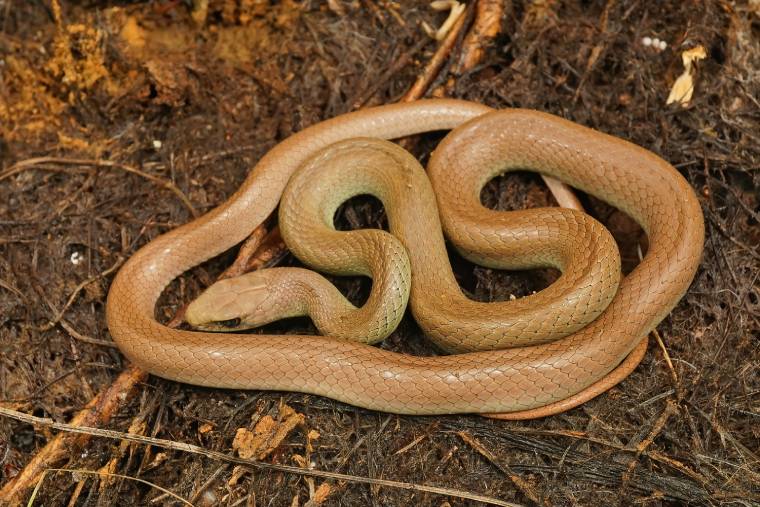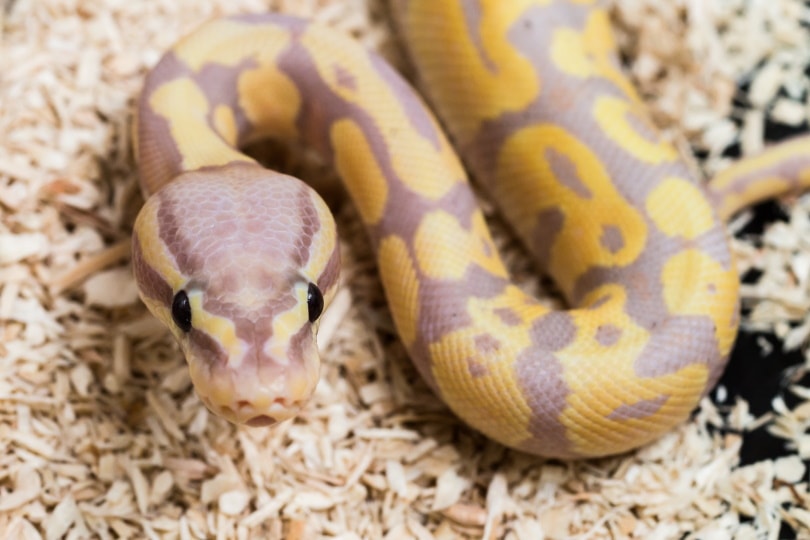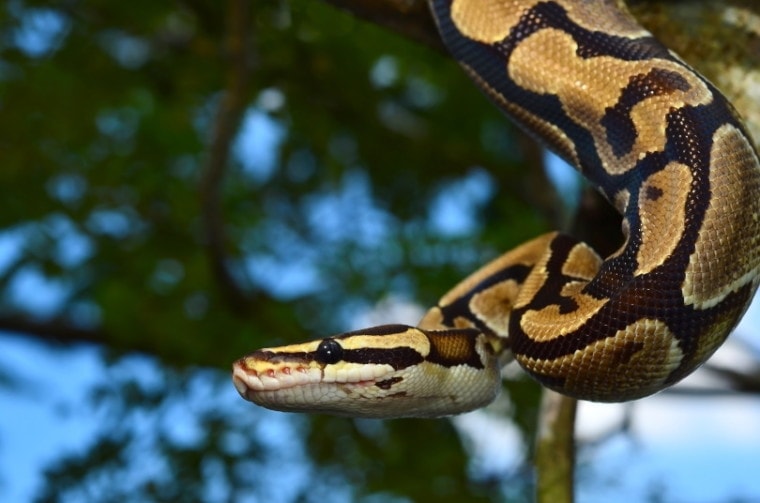
Ball pythons are gorgeous snakes that have been extremely popular in the pet trade for many years. Not only is their beauty captivating, but they have generally docile temperaments, and unlike most species of python, they reach a manageable size.
They are native to Central and West Africa, just north of the equator inhabiting the grasslands and open forests of their natural range. In this article, we’ll learn more about these fascinating snakes, where they come from, and what life looks like for them outside of captivity.

Ball Pythons in the Wild
Ball pythons, known scientifically as Python regius, are one of the four species of python native to Africa. They are also referred to as the Royal python and are highly revered and even worshiped by certain cultures in their homeland.
There is even a Temple of Pythons, a Vodun shrine located in Ouidah, Benin that houses dozens of ball pythons. Vodun is a religion that is practiced by the Aja, Ewe, and Fon people of Benin, Togo, Ghana, and Nigeria, and these snakes are considered a sign of good fortune. They are also admired by the Igbo people of southeastern Nigeria, who consider the snakes to be a symbol of the earth since they travel so close to the ground.
Ball pythons are non-venomous constrictors that have a stocky build and reach anywhere from 3 to 5 feet in length, though on rare occasions females may reach up to 6 feet. They have small heads, dark, round eyes, and distinct heat-sensing pits located on each side of their mouths. The name ball python comes from their unique self-defense tactic where they coil tightly into a ball with their head in the center.
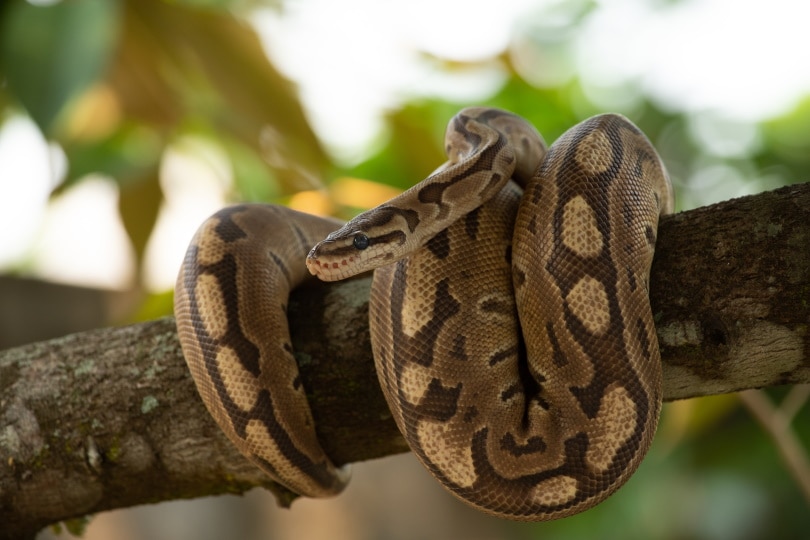
Native Range
These snakes are endemic to Sub-Saharan Africa, which is the region located directly below the Sahara Desert spanning south to the Equator. Their natural range is from the west coast of Senegal, Côte D’Ivoire, and Ghana stretching east through Chad, Sudan, Cameroon, and Uganda and up to the Nile River which is the geographical border for the species.
Natural Habitat
Ball pythons are predominantly ground dwellers, though they may occasionally climb. They make their home in the grasslands, savannas, and open forests where they commonly burrow underground or beneath logs, rocks, or other natural debris during the day, only to emerge at dusk to hunt for prey.
Diet
A wild ball python’s diet consists mostly of rodents, small mammals, and birds. Native rodents make up the largest percentage of their diet, including Gambian pouched rats, black rats, rufous-nosed rats, shaggy rats, and striped grass mice. Juvenile ball pythons are much more likely to prey on small birds compared to larger adults.
These snakes are opportunistic ambush hunters that subdue prey by striking and constricting them with their heavily muscled bodies before eating them whole.
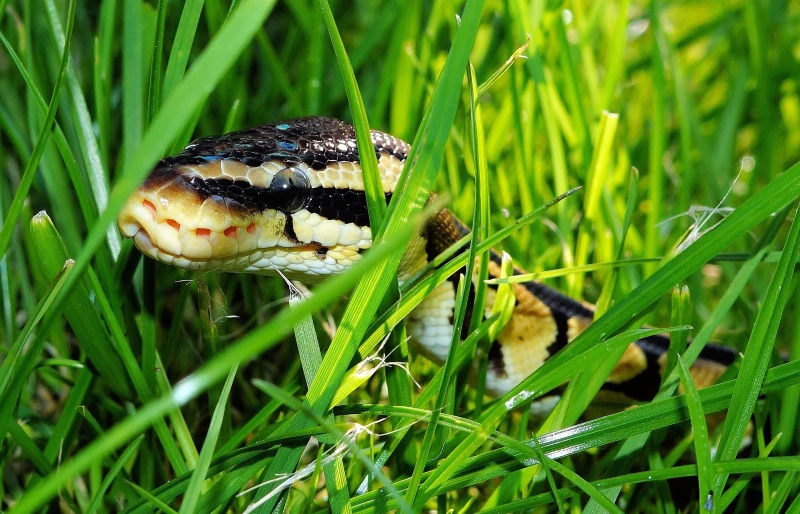
Conservation Status
The ball python is currently listed as a species of Least Concern according to the IUCN. They have faced Near Threatened status, however, due to population decline resulting from the collection of wild specimens for the pet trade. The capture of wild ball pythons poses a risk of significant damage to their population.
Hunting for skin and meat and habitat loss is also a concern, as it is for many species across the globe. Their natural range in West and Central Africa is used for agriculture, which destroys their home and puts them right in the way of humans.
Ball Pythons in Captivity
Ball pythons are considered one of the most popular pet snakes and are also among the top pet reptiles in the world. Arriving in America around the 1970s, their popularity in the pet trade didn’t start to pick up until the 1990s.
They became sought-after pets because they do well in captivity, are fairly low-maintenance pets with more docile temperaments, and reach an impressive size without being unmanageable like some of their larger python counterparts. Between 1997 and 2018, more than 3.5 million ball pythons had been exported from the countries of Ghana, Togo, and Benin.
Reptile keepers and hobbyists quickly learned how to breed these animals in captivity, which expanded the industry and ultimately resulted in the numerous color and pattern morphs that ball pythons are so famous for. Though they are still collected from the wild, nowadays, most ball pythons in the pet trade are captive-bred.
Potential keepers need to note that purchasing a captive-bred specimen is the way to go. Wild-caught animals have a hard time adapting to life in captivity and could potentially carry both external and internal parasites.
While these snakes only live an average of 10 to 15 years in the wild, they typically reach anywhere between 20 and 30 years of age in a captive environment where they are provided proper care and husbandry. Interestingly, the oldest recorded ball python in captivity is 62 years old and resides at the Saint Louis Zoo.
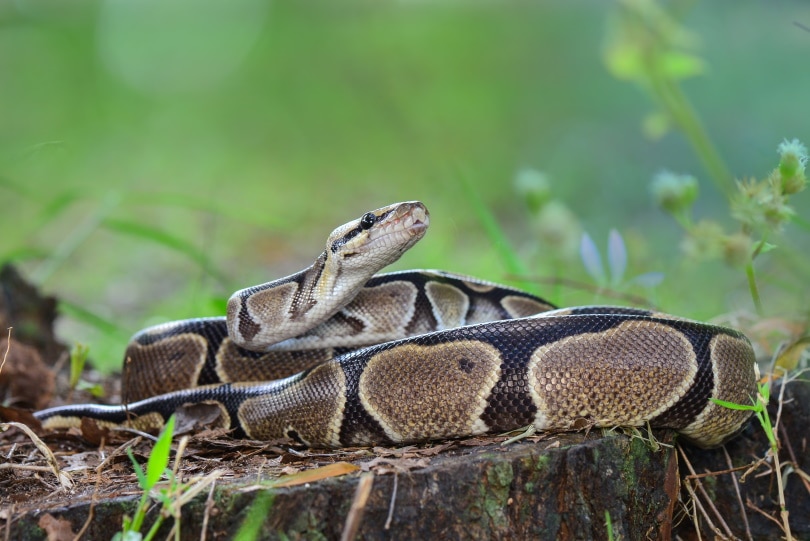

Conclusion
The ball python is native to West and Central Africa where they are highly revered. These ground-dwelling snakes are opportunistic hunters that thrive in the grasslands and open forests that are rich in the small mammals and birds they hunt as prey. Many wild ball pythons were collected from the wild population and brought into the pet trade, where the species is now among the most popular pet snakes in the world.
Featured Image Credit: Ery Azmeer, Shutterstock
